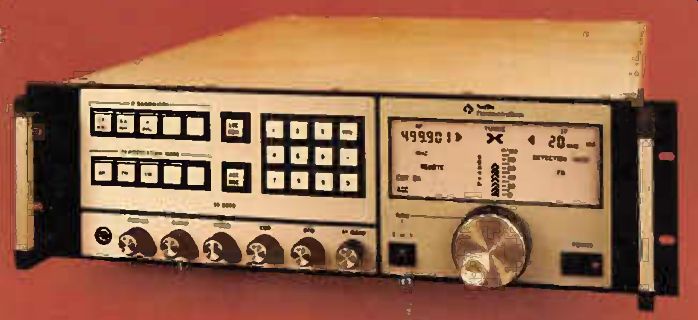3. The Superheterodyne Receiver
4. Implementing Single Conversion Superheterodyne
5. Implementing Double Conversions
6. Implementing Multiple Conversions
7. Direct Conversion Implementation
8. Special Conversions and Their Implementation
10. Modern Receivers
11. System Design Considerations for Modern Receivers
12. Dynamic Range
13. Design Considerations for the Front End
14. Mixers
15. Variable Frequency Oscillators
16. Digital Frequency Counters and Radio Receivers
17. Intermediate Frequency (IA) Amplifier Design
18. Automatic Gain Control (AGC)
19. Product Detector and Beat Frequency Oscillator (Bfo)
20. Audio Amplifier Design Considerations
21. The Power Supply
23. Packaging and Mechanical Considerations
24. Radio Receiver Technology Today
26. Future Trends

[This guide is based on a 1989 TAB book on the topic of "Radio--Receivers and reception". To preserve historical legacy, we made no attempt to update the content.]
Overview of this Guide
Here's a guide that thoroughly explores the latest state-of the-art in radio receivers and puts it in perspective with prior technology and future design trends. . with plenty of practical guidance for constructing an actual receiver from systems design to packaging.
Written for amateur radio enthusiasts, radio collectors, communications professionals, and engineers, the guide leads off with a brief history of receivers covering the coherer, the decoherer, practical coherer/decoherer receivers, the Galena crystal discovery, audion and regenerative receivers and the tuned frequency receiver. Single, multiple, and direct conversions of the superheterodyne are discussed along with image problems, selectivity, crystal filters, mechanical and ceramic filters, surface acoustic wave filters, and technological tradeoffs in intermediate frequency filters.
System design considerations for modern receivers are thoroughly documented including design tools for predicting intermodulation distortion and using computers to support product charts. The section on mixers is equally complete (with advanced data on such topics as image rejection mixers, image recovery mixers, J-FET and integrated circuit mixers) and synthesizers are covered from phase lock synthesizers, the frequency synthesizer used as a VFO, to synthesizer pitfalls in communications receivers, and more.
There are sections on automatic gain control, assembly of the receiver and other equipment, packaging and mechanical considerations, and a practical look at receiver technology as it exists today and how it is shaping up for the future. A unique blend of theory and application, this handbook is an invaluable reference for every amateur or professional interested in receiver design and construction.
By Cornell Drentea: Cornell Drentea is an electrical engineer with more than 12 years experience in the design and development of rf communications equipment from synthesized communications receivers to data and voice communications networks.
Introduction
As we approach the twenty-first century, radio technology is becoming increasingly complex, with the progress of the communication receiver being one of the most dynamic technical episodes of our century.
New stringent requirements such as good frequency stability, large signal handling capability, and improved selectivity make today's radio receiver a totally different apparatus than its predecessor of the 1920s.
These new requirements have brought about the need for new technologies and make the "gap" of achieving technical excellence ever narrower.
The scope of this guide is to give you a complete picture of what has been done and what can be done in receiver design, as well as to describe in a chronological way the historical technical facts that impacted radio technology over the past eighty years. This guide will explain and expand on these facts showing present and future trends and finally present a receiver design from system through packaging. In this respect, the guide is an accelerated design guide, filling a gap for the beginner while at the same time being a comprehensive work for the advanced professional.
Although portions of this work can be used for practical implementation, the material is not meant as a cookbook, but rather as a concentrated educational kit in radio receiver design.
Because the subject is so vast, in designing the guide I chose to emphasize certain technical areas that cannot usually be found in one single publication and combine them with facts and experiences of my own. From a professional standpoint, this work should be good for anyone considering an rf signal processor (as well as radio) concept. It is hoped that the guide will be found useful and entertaining by the beginner as well as the advanced reader.
Also see: Fundamentals of Radio Broadcasting